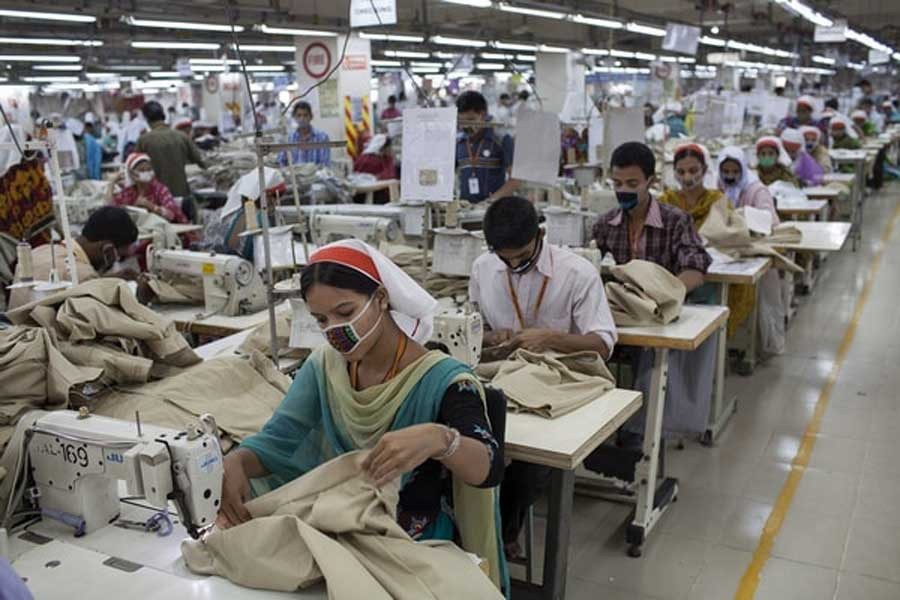Apparel makers such as Dhaka-based Ananta Group are powering Bangladesh's economic expansion, the fastest in Asia, but a record high gas price spike threatens to derail the industry's growth, according to Nikkei Asian Review.
In an attempt to cut losses from imported liquefied natural gas, the government raised gas prices by almost one-third on average, effective July 1, the start of the 2020 financial year. The country subsidizes gas and sells it at below production cost, it added.
With annual sales of more than $300 million, the 27-year-old Ananta employs 26,000 people and churns out bottoms, sweaters and men's suits for top Western high-street retailers such as H&M, Gap, Levi's, Marks & Spencer, Jack & Jones and Zara.
The gas price hike will make it difficult for the company to sustain its growth, Sharif Zahir, the company's US-educated managing director, told the Nikkei Asian Review. "Prices of products have drastically fallen," he noted.
Leaders of the industry group echo his sentiments. With gas costs constituting around 1.5 per cent of manufacturing expenditures in the apparel industry, a 38 per cent hike in gas price means an almost 1.0 per cent increase in production costs, noted Rubana Huq, president of the Bangladesh Garment Manufacturers and Exporters Association.
"This may not sound much in terms of percentage, but for an industry struggling for every penny this will be another blow," she said in an emailed response to the Nikkei Asian Review.
When challenges like erratic gas supply, pressure fluctuations and steep drops in product prices dissuade entrepreneurs from investing, this sudden price surge would cripple their financial plans, Huq said.
"Such an increase in price would only add up to our production cost making the business difficult for SMEs (small and medium enterprises) whose break-even is on thin ice," she said.
The assumed supply of around 850 million cubic feet (MMcf) of re-gasified LNG a day to the national grid by 2020 prompted the authorities to implement the hike, the largest since 2015. The last hike took force in 2017.
For industrial users like Ananta, prices have been raised by 38 per cent and for captive power operators the rate is as high as 43.97 per cent. Household consumers will see their prices rise by almost a quarter.
The decision has sparked an outcry from businesses, consumer rights groups and opposition parties, with leftists calling for a nationwide strike on July 7.
But the government defends the move, saying it was essential, given "gas production, LNG import, transmission and distribution costs and socio-economic conditions of the country," according to the Bangladesh Energy Regulatory Commission's statement.
"You have to understand the difference between the cost of energy and the cost of no energy," Monowar Islam, chairman of the Bangladesh Energy Regulatory Commission, told reporters in Dhaka while announcing the new tariffs on Sunday.
But Alamgir Shamsul Alamin, acting president of the Bangladesh Textile Mills Association lobby group, insisted the price hike is not justified because the gas supply situation has not improved that much.
Including re-gasified LNG supplied by two floating storage and re-gasification units in southeastern Chittagong, Bangladesh produces slightly over 3,000 MMcf of gas a day, below the daily demand of 4,000 MMcf, according to government figures.
If the primary textiles industry loses steam because of the gas price hike, ready-made garment exporters will also suffer, according to Alamin.
"We contribute significantly to the garment sector's exports of $30-32 billion," Alamin said.
"The 44 per cent gas price increase for captive power plants will directly affect us," he said, noting that 99 per cent of textile factories run such plants to offset unreliable grid electricity.
He warned if the industry loses competitiveness, jobs will disappear from roughly 5,000 textile and clothing factories, which provide employment for 5.0 million people.
He said the association is working to communicate its concerns to government leaders.
"We'll meet with the energy minister when he returns home [from his trip overseas]," he said.
Recent export trends have given garment makers a lot to cheer about, however.
Government data shows exports of apparel climbed by around 13 per cent to $31.73 billion in the 11 months to May, lifted by orders shifting from China as its trade war with the US continues. This represents more than four-fifths of the country's merchandise shipments of $37.75 billion during the same period.
Factory owners complain that buyers' hard bargaining is dragging prices down, even as exports have clocked double-digit growth.
On top of the hefty gas bill, Zahir said production costs have spiraled by 30 per cent because of a minimum wage increase. In January, Bangladesh raised the minimum wage for entry level garment workers by 51 per cent to $95 per month following violent protests.
Zahir made a compelling case for lowering gas prices, which he said is needed to maintain the growth momentum.
"Countries like Bangladesh will lag behind if export-oriented manufacturing sectors stop growing," he said.


